The glycemic index is a tool that helps people understand how different foods affect their blood sugar levels. It ranks carbohydrates on a scale from 0 to 100 based on how quickly they raise blood glucose. Foods with a low glycemic index (55 or less) are digested more slowly and cause a gradual rise in blood sugar.

【Sugar Defender™】Buy Now $69 | SugarDefender Official Site
Buy Now Sugar Defender — Sugar Defender 100% Natural Formula. 60 Day Guarantee. Free Shipping. Only $49 per Bottle. Blood Sugar Defender Order 6 Bottles or 3 Bottles and Get 2 Free Bonuses.
This concept is useful for managing diabetes, weight, and overall health. Foods with a high glycemic index (70 or above) can cause rapid spikes in blood sugar. These quick changes may lead to energy crashes and increased hunger. On the other hand, low glycemic foods provide steady energy and help control appetite.
The glycemic index can be a helpful guide for meal planning. It’s important to note that other factors like portion size and food combinations also impact blood sugar responses. A balanced diet that includes a mix of nutrients is key for good health.
Key Takeaways
- The glycemic index ranks foods based on their effect on blood sugar levels
- Low glycemic index foods can help manage diabetes and support overall health
- Combining the glycemic index with portion control leads to better meal planning
Carbohydrates and Their Role
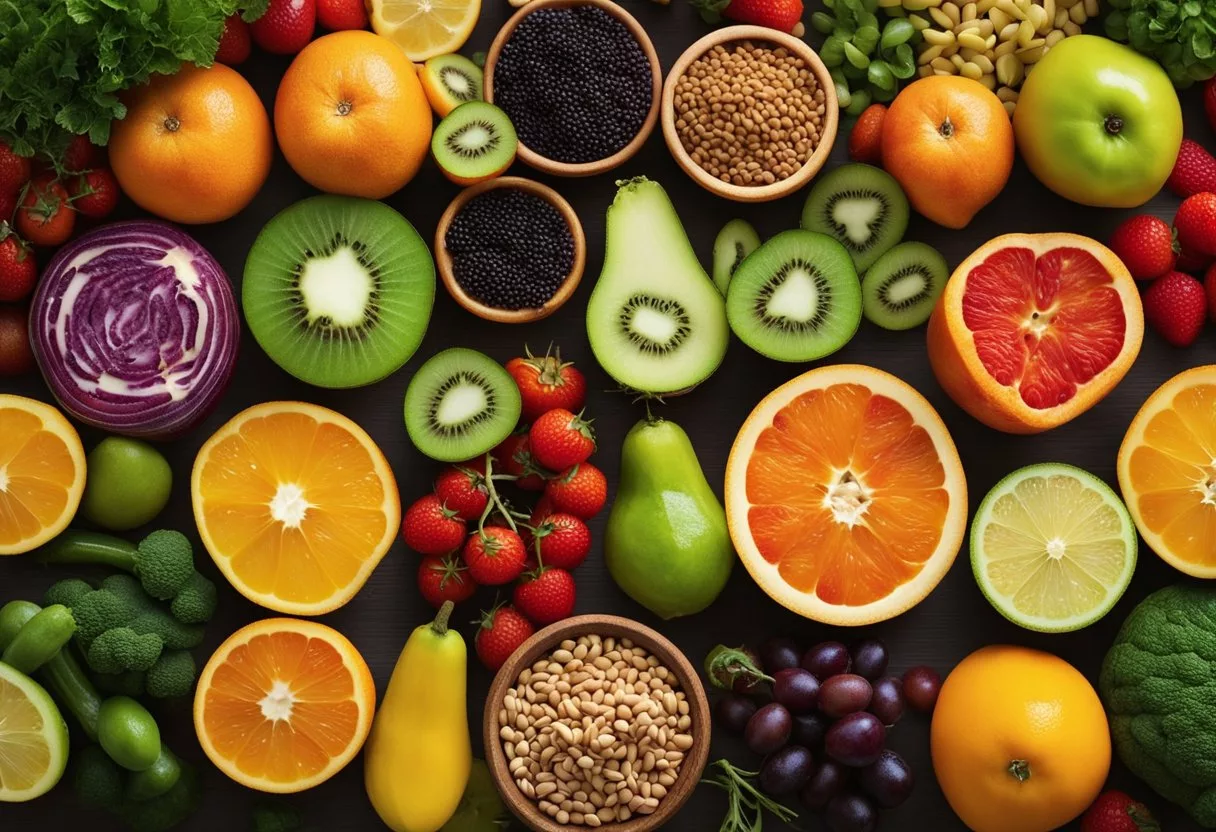
Carbohydrates are key nutrients that provide energy for our bodies. They come in different forms and affect blood sugar levels in various ways.
Carbohydrate Types and Digestion
Carbohydrates fall into three main types:
- Sugars (simple carbs)
- Starches (complex carbs)
- Fiber
The body breaks down sugars and starches into glucose. This process starts in the mouth and continues in the small intestine. Enzymes help break complex carbs into simple sugars.
Fiber is different. It passes through the body mostly undigested. Fiber is important for digestive health and can help lower the risk of heart disease.
Impact of Carbohydrates on Blood Glucose
Carbohydrates have a direct effect on blood sugar levels. When we eat carbs, they turn into glucose in our bloodstream. This causes blood sugar to rise.
The body releases insulin to move glucose into cells. Different carbs affect blood sugar in different ways. This is where the glycemic index comes in. It ranks foods based on how quickly they raise blood sugar.
Foods with a high glycemic index cause a rapid spike in blood sugar. Low glycemic index foods lead to a slower, steadier rise. This can be helpful for managing diabetes and weight.
The Glycemic Index Explained
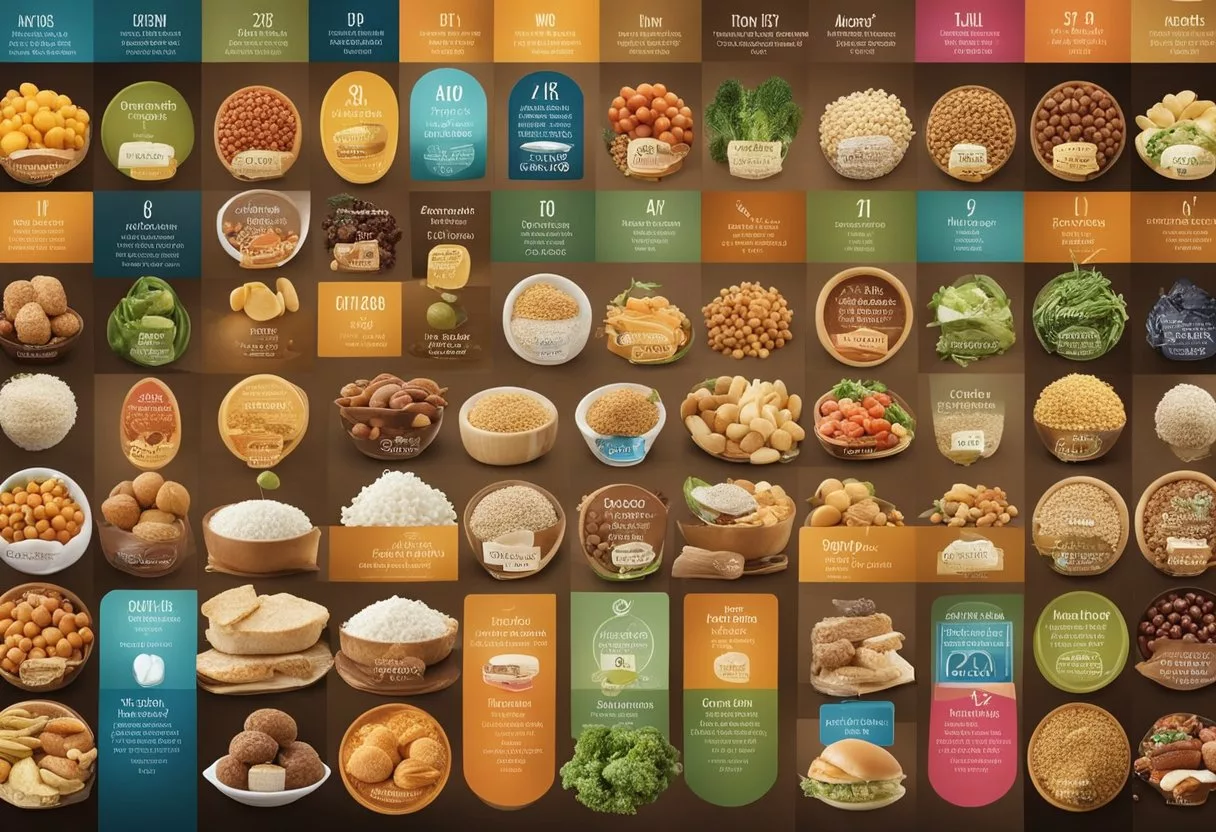
The glycemic index (GI) helps us understand how foods affect blood sugar. It’s a useful tool for making smart food choices and managing blood sugar levels.
Defining Glycemic Index and Glycemic Load
The glycemic index ranks foods on a scale from 0 to 100. Foods with a high GI cause blood sugar to rise quickly. Low GI foods lead to a slower, more steady rise.
Pure glucose has a GI of 100. Other foods are compared to this baseline. Here’s a quick breakdown:
- Low GI: 55 or less
- Medium GI: 56-69
- High GI: 70 or more
Glycemic load (GL) takes portion size into account. It gives a more complete picture of a food’s effect on blood sugar. To calculate GL, multiply the GI by the grams of carbs in a serving, then divide by 100.
Glycemic Index Versus Glycemic Load
GI and GL are related but different. GI only looks at how quickly a food raises blood sugar. GL factors in the amount of carbs too.
A food can have a high GI but low GL if the serving size is small. Watermelon is a good example. It has a high GI but low GL due to its high water content.
GL is often seen as more useful for meal planning. It helps balance high and low GI foods. This can lead to better glycemic control over time.
Factors Influencing Glycemic Index Values
The glycemic index (GI) of foods can vary based on several key factors. These include the food’s composition, how it’s prepared, and its level of ripeness.
Role of Food Composition
The makeup of a food plays a big role in its GI value. Carbohydrates are the main nutrient that affects blood sugar levels. But other nutrients matter too.
Protein slows down digestion and lowers the GI. Foods high in protein often have a lower GI.
Fat also slows digestion. It can reduce the GI of a meal when eaten with carbs.
Fiber is key for a low GI. It slows the release of sugar into the blood. Whole grains and vegetables often have lower GI due to their fiber content.
Effects of Cooking and Processing
How food is prepared can change its GI. Cooking often raises the GI by breaking down food structures.
Boiling can increase the GI of some foods. It makes starches easier to digest.
Grinding grains into flour raises their GI. This is why whole grains often have a lower GI than refined flours.
Processing foods can remove fiber and other nutrients. This often leads to a higher GI.
Cooling cooked starches can lower their GI. This forms resistant starch, which is harder to digest.
Influence of Ripe and Ripeness
The ripeness of fruits and vegetables affects their GI. As fruits ripen, their sugar content often increases.
Ripe bananas have a higher GI than unripe ones. The starch in unripe bananas turns to sugar as they ripen.
Some vegetables get sweeter as they ripen. This can raise their GI slightly.
Ripeness can also affect fiber content. This may impact the GI in some cases.
Measuring and Interpreting GI Values
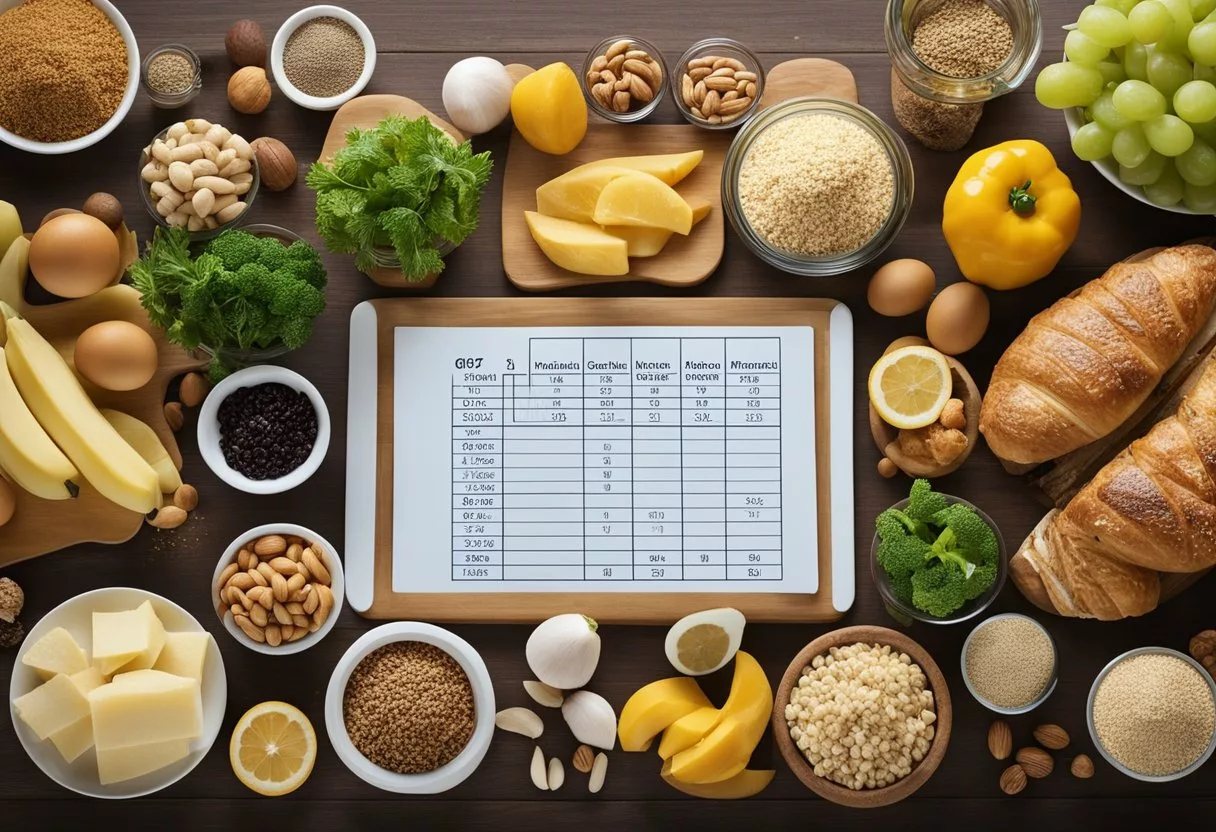
The glycemic index (GI) helps people understand how foods affect blood sugar. It uses a scale from 0 to 100. Foods with higher scores raise blood sugar more quickly.
Testing Procedures for GI
GI testing follows strict rules. Scientists test foods on 10 or more people. Volunteers eat a set amount of a test food with 50 grams of carbs. Their blood sugar is checked over 2 hours. This is compared to their response from eating pure glucose.
The blood glucose response is graphed. The area under this curve is used to calculate the GI value. Lower curves mean lower GI scores.
Tests are done in the morning after fasting. Testers control many factors. These include what volunteers eat the night before. They also limit exercise and alcohol before the test.
Comparative GI Values of Foods
Different foods have very different GI values. Pure glucose has a GI of 100. This is the baseline. White bread often has a high GI, around 75. Some types of rice can be high too, with scores near 70.
Here’s a quick guide to GI ranges:
- Low GI: 55 or less
- Medium GI: 56-69
- High GI: 70 or more
Whole grains and high-fiber foods tend to have lower GI values. Processed foods often have higher GIs. The way food is cooked can change its GI. Boiled potatoes have a lower GI than baked ones.
It’s key to note that GI only looks at carbohydrates. It doesn’t account for other nutrients. A food’s overall health impact involves more than just its GI.
Glycemic Index in Diet and Nutrition
The glycemic index (GI) plays a key role in diet and nutrition. It affects blood sugar levels, weight management, and overall health. Many experts recommend focusing on low GI foods as part of a balanced diet.
Incorporating Low GI Foods into the Diet
Low GI foods can help control blood sugar and provide steady energy. Some examples include:
- Whole grains (oats, barley, quinoa)
- Legumes (lentils, chickpeas, kidney beans)
- Non-starchy vegetables (broccoli, spinach, peppers)
- Most fruits (apples, berries, citrus)
To lower a meal’s GI, pair high-GI foods with low-GI options. For instance, add nuts to cereal or have a salad with pasta. Cooking methods also matter. Al dente pasta has a lower GI than soft-cooked pasta.
Balancing Macronutrients for Optimal Health
A balanced diet includes carbs, proteins, and fats. The GI mainly applies to carbs, but all macronutrients affect blood sugar and health.
Protein and fat can slow digestion, lowering a meal’s overall glycemic impact. This is called the glycemic load (GL). The GL takes into account both the GI and the amount of carbs in a food.
A typical balanced plate might include:
- 1/4 lean protein
- 1/4 whole grains or starchy vegetables
- 1/2 non-starchy vegetables
- A small amount of healthy fats
This mix provides nutrients and helps maintain steady blood sugar levels.
Strategies for Weight Management
The GI can be a useful tool for weight control. Low GI diets may help people feel full longer and reduce overeating.
Key strategies include:
- Choose low GI snacks like fruits or nuts
- Replace high-GI foods with lower-GI alternatives
- Practice portion control, especially for high-GI foods
- Eat regular, balanced meals to avoid blood sugar spikes
It’s important to note that the GI is just one factor in weight management. Total calorie intake and physical activity also play crucial roles.
Glycemic Index and Health Outcomes
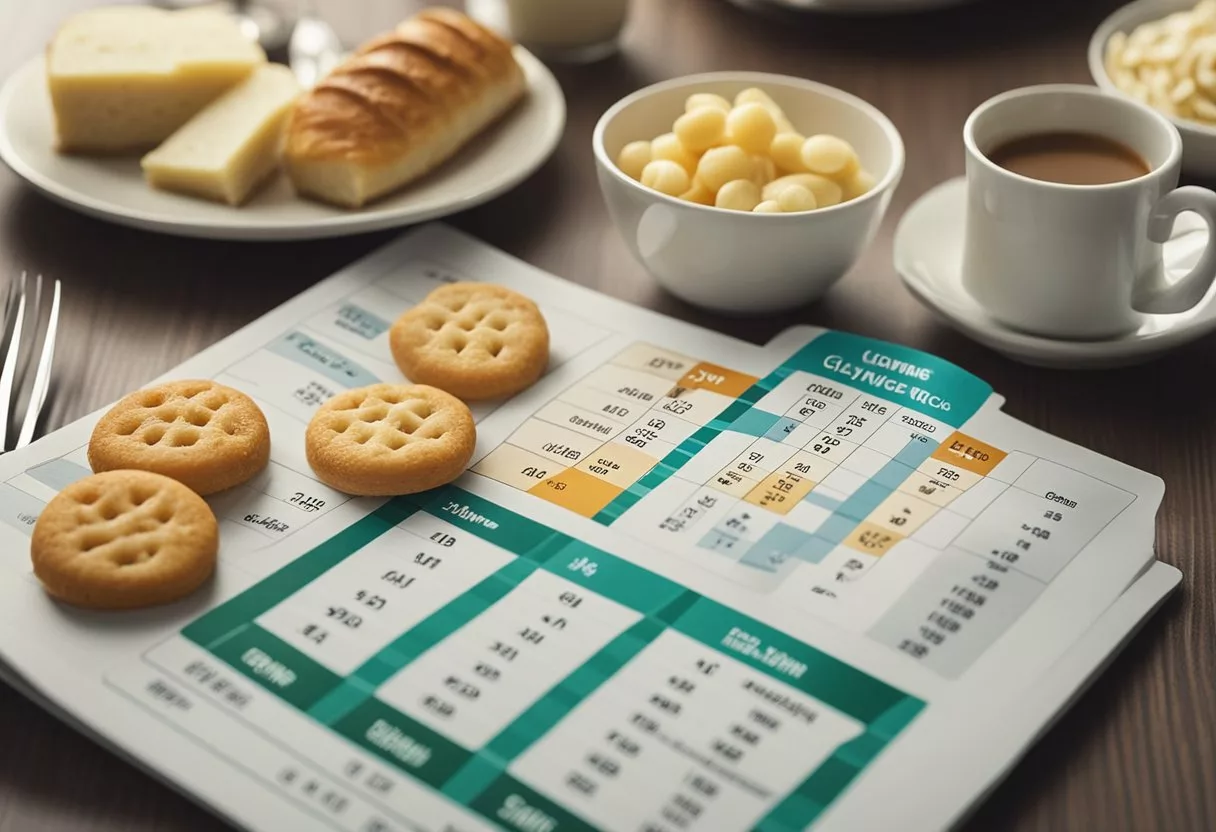
The glycemic index (GI) plays a key role in various health conditions. It affects blood sugar levels, which can impact diabetes, heart health, and weight management.
GI’s Role in Diabetes Management
Glycemic index is crucial for diabetes management. It helps people control blood sugar levels. Low-GI foods cause smaller spikes in blood glucose. This is good for both type 1 and type 2 diabetes.
Eating low-GI foods can improve insulin sensitivity. It may also reduce the need for diabetes medications. A low-GI diet can help prevent diabetes in at-risk people.
Doctors often suggest low-GI diets for better glycemic control. This approach can lead to fewer diabetes complications over time.
Cardiovascular Health and GI
The glycemic index also affects heart health. High-GI diets may increase the risk of heart disease. They can raise blood triglycerides and lower good cholesterol.
Low-GI diets can help protect the heart. They may lower blood pressure and reduce inflammation. This can decrease the risk of heart attacks and strokes.
Eating low-GI foods can improve overall cardiovascular health. It may help manage existing heart conditions too.
Glycemic Index and Obesity
GI plays a role in weight management and obesity. Low-GI foods often make people feel full for longer. This can help control appetite and reduce overeating.
High-GI foods may lead to quick hunger returns. This can cause people to eat more calories overall. Low-GI diets might make it easier to lose weight and keep it off.
Some studies show that low-GI diets can improve body composition. They may help reduce body fat percentage. This is important for long-term health and weight control.
Practical Advice for Monitoring Glycemic Index
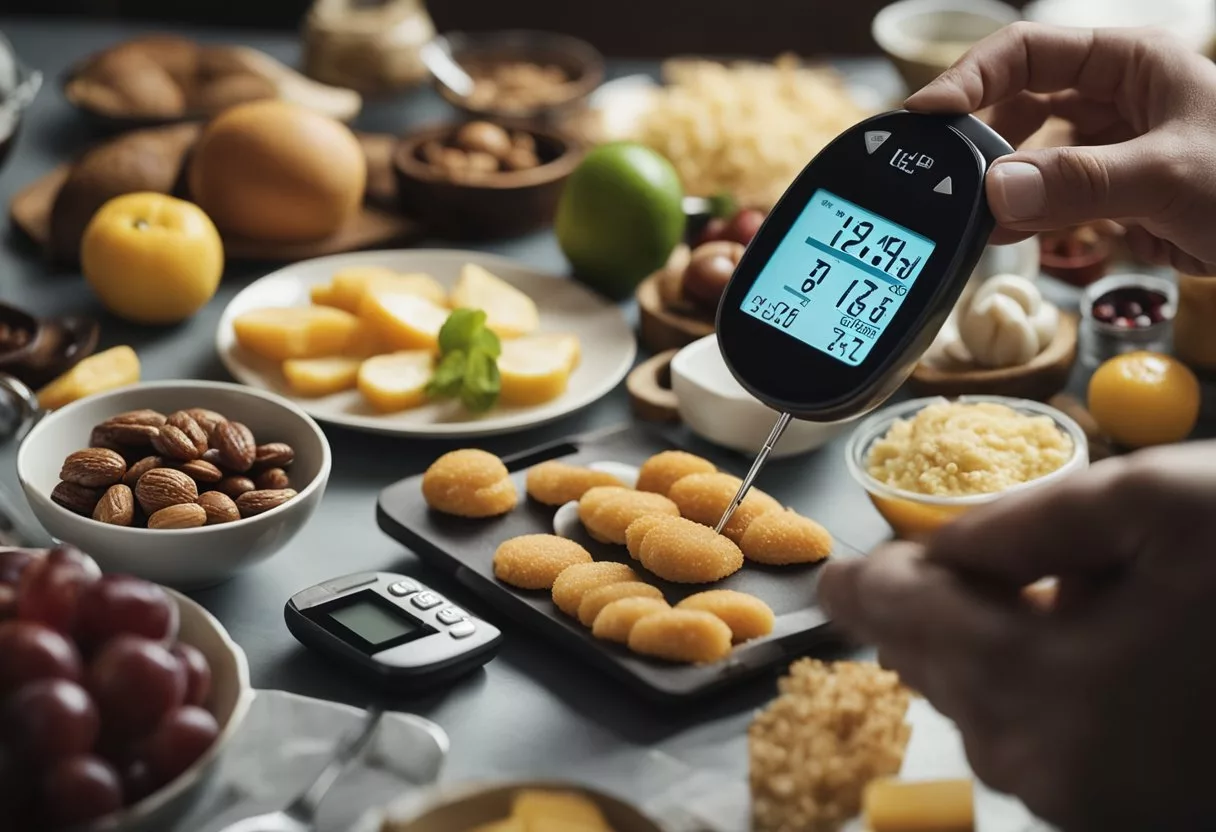
Keeping track of glycemic index (GI) can help manage blood sugar levels. Choosing low-GI foods and using smart cooking methods are key strategies.
Selecting Appropriate Low GI Foods
Low glycemic index diets focus on foods that don’t cause rapid spikes in blood sugar. Good choices include:
• Whole grains: Brown rice, quinoa, barley • Legumes: Lentils, chickpeas, kidney beans • Non-starchy vegetables: Broccoli, spinach, peppers • Fruits: Berries, apples, pears
It’s helpful to use GI tables as a guide. The International Tables of Glycemic Index list over 2,400 food items. A dietitian can offer personalized advice on food choices.
Combining low-GI foods with small amounts of higher-GI foods can balance meals. For example, adding nuts to breakfast cereal or having a small portion of whole grain bread with a salad.
Tips on Cooking for Lower GI
Cooking methods can affect a food’s GI. Here are some tips:
- Al dente pasta: Cook pasta until just firm, not soft.
- Cooling starches: Let potatoes or rice cool before eating.
- Adding acid: Lemon juice or vinegar in dishes lowers GI.
- Less processing: Choose whole grains over refined flours.
Preparing meals at home allows more control over ingredients and cooking methods. Slow cooking and using low temperatures can help preserve nutrients and keep GI lower.
Experimenting with herbs and spices can add flavor without raising GI. Cinnamon, for example, may help regulate blood sugar levels.
The Role of Physical Activity and Lifestyle

Physical activity plays a crucial role in managing glycemic index and overall health. Exercise benefits insulin sensitivity in people with type 2 diabetes. It helps control blood glucose levels and reduces body weight.
Regular movement throughout the day is important. Breaking up sitting time can improve blood glucose and insulin levels. Even small amounts of activity can make a difference.
Timing of exercise matters too. Physical activity after meals reduces blood glucose. Exercising later in the day may also help with glycemic control.
Different types of exercise have various benefits:
- Aerobic exercise: Improves cardiovascular health
- Resistance training: Builds muscle and boosts metabolism
- Flexibility exercises: Enhance mobility and reduce injury risk
Weight management is closely linked to glycemic control. Maintaining a healthy weight through diet and exercise can help keep blood sugar levels stable.
Lifestyle choices beyond exercise also impact glycemic index. Stress management, adequate sleep, and avoiding smoking are all important factors. These habits contribute to better overall health and improved glycemic control.
Monitoring blood glucose is an essential part of managing diabetes. It helps individuals understand how their lifestyle choices affect their blood sugar levels. This knowledge allows for better decision-making about diet and exercise.
Advances and Research in Glycemic Index

New studies have expanded our understanding of glycemic response and its impact on health. Researchers are exploring glycemic variability and novel approaches to dietary management.
Beyond GI: Emerging Concepts in Glycemic Variability
Glycemic variability looks at blood sugar fluctuations over time. This measure gives a more complete picture than just average glucose levels.
Recent research has linked high glycemic variability to increased risks of heart disease and other health issues. Scientists are now studying how different foods affect glycemic swings.
The American Diabetes Association recognizes glycemic variability as an important factor in diabetes management. They recommend monitoring patterns of highs and lows, not just A1C levels.
Some studies suggest glycemic variability may play a role in cancer development. More research is needed to fully understand this connection.
The Future of Dietary Management and the GI
New technologies are changing how people track their glycemic responses. Continuous glucose monitors allow real-time data on blood sugar changes after meals.
Personalized nutrition is an emerging field. It recognizes that glycemic responses can vary between individuals, even for the same foods.
Scientists are updating the glycemic index database. The latest version includes over 4,000 foods, helping people make informed choices.
Researchers are also exploring how the glycemic index fits into broader dietary patterns for disease prevention. Low-GI diets show promise for managing diabetes and heart health.
Additional Considerations in Glycemic Index
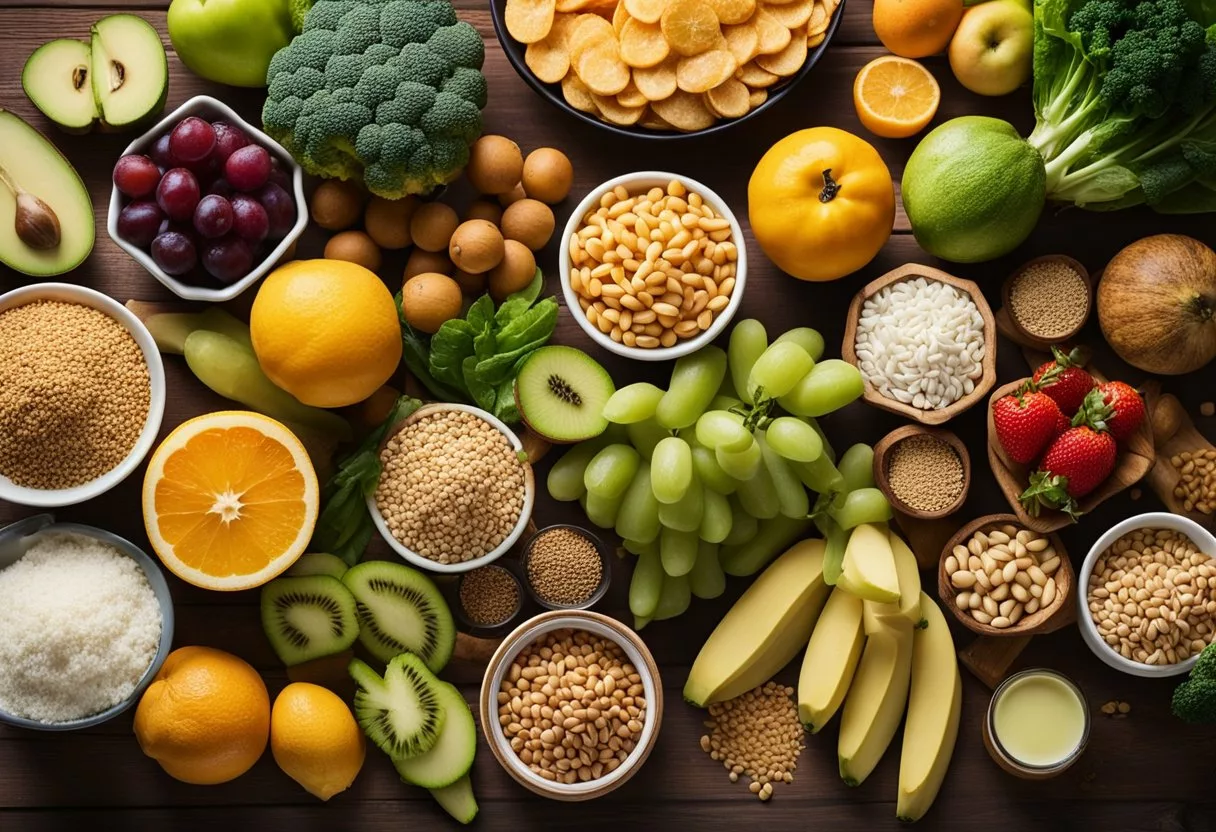
The glycemic index (GI) concept has several important factors that affect its practical application. These include individual metabolic differences, global dietary patterns, and critiques of the GI approach.
Influence of Individual Metabolic Responses
People respond differently to the same foods based on their unique biology. Factors like age, weight, and activity level can change how quickly blood sugar rises after eating.
Some people are more sensitive to carbohydrates than others. This means the same food might cause a big blood sugar spike in one person but only a small rise in another.
Health conditions like diabetes also affect blood sugar responses. Diabetics often see higher and longer-lasting blood sugar increases compared to those without the disease.
Genetics play a role too. Certain genes influence how efficiently the body processes carbohydrates. This can lead to different GI values for the same food across individuals.
GI and Global Dietary Patterns
The glycemic index was developed using Western diets, but food habits vary worldwide. This creates challenges when applying GI concepts globally.
Many traditional diets rely on staple foods with varying GI values. For example:
- Asian diets often center on rice (high GI)
- Mediterranean diets feature whole grains and legumes (lower GI)
- African diets may include cassava or plantains (medium to high GI)
Food preparation methods also affect GI. Cooking, cooling, and reheating can change a food’s glycemic response.
Cultural eating patterns matter too. Meal timing, portion sizes, and food combinations all influence overall glycemic impact.
Challenges and Criticisms of the GI Concept
Despite its usefulness, the glycemic index has faced several critiques. One major issue is the variability in GI measurements between studies.
Testing methods aren’t always consistent. This can lead to different GI values for the same food. It makes it hard for people to know which numbers to trust.
The GI doesn’t account for typical serving sizes. A food might have a high GI but be eaten in small amounts, limiting its real-world impact.
Some argue the GI is too simplistic. It doesn’t consider other important nutrients like protein or fat that can affect blood sugar.
Labeling foods with GI values has proven challenging. There’s no global standard for GI labeling on food packages.
Critics also point out that focusing solely on GI might lead people to avoid nutritious foods just because they have a high GI value.
Frequently Asked Questions
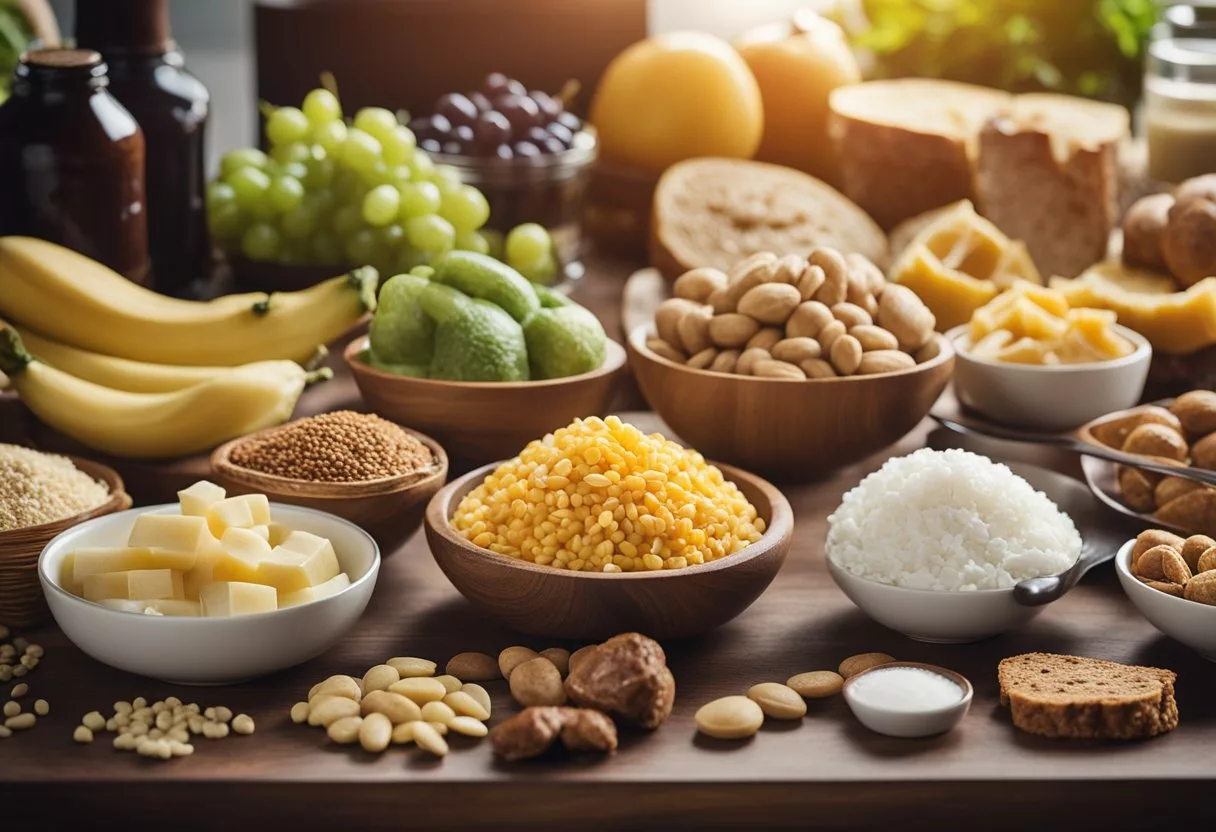
The glycemic index helps people understand how foods affect blood sugar. It provides useful information for meal planning and managing diabetes. Let’s explore some common questions about this important tool.
What foods are classified as low, medium, and high on the glycemic index scale?
Foods are grouped based on how quickly they raise blood sugar. Low GI foods have a value of 55 or less. Medium GI foods range from 56-69. High GI foods are 70 or above.
Low GI foods include most fruits and vegetables, beans, and whole grains. Medium GI foods are sweet corn, bananas, and basmati rice. High GI foods include white bread, potatoes, and sugary drinks.
How is the glycemic index of a food determined?
Scientists test foods on volunteers. They measure how much a standard amount of the food raises blood sugar over 2 hours. This is compared to pure glucose, which has a GI of 100.
The testing process is carefully controlled. Factors like how a food is prepared can affect its GI value. That’s why some foods may have different GI ratings from different sources.
Can you explain the difference between glycemic index and glycemic load?
Glycemic index (GI) ranks how quickly a food raises blood sugar. Glycemic load (GL) considers both the GI and the amount of carbs in a serving.
GL provides a more complete picture of a food’s impact. A food may have a high GI but a low GL if the serving size is small. Watermelon is a good example – high GI but low GL due to its high water content.
What impact does the glycemic index of a food have on blood sugar levels?
High GI foods cause rapid spikes in blood sugar. Low GI foods lead to a slower, more gradual rise. This affects insulin release and how the body processes glucose.
Eating mostly low GI foods can help keep blood sugar more stable. This is especially important for people with diabetes or those trying to manage their weight.
How can the glycemic index be used in meal planning for diabetes management?
The GI helps people with diabetes choose foods that won’t cause big blood sugar spikes. It can guide meal planning and snack choices.
Pairing high GI foods with low GI options can balance meals. Adding protein and healthy fats also helps slow digestion and reduce blood sugar impact.
Are there any common misconceptions about the glycemic index that I should be aware of?
Some people think all high GI foods are unhealthy. This isn’t true. Many nutritious foods like carrots have a high GI. The overall nutritional value matters too.
Another misconception is that the GI is the only factor to consider. Portion sizes, cooking methods, and individual responses all play a role in how food affects blood sugar.
